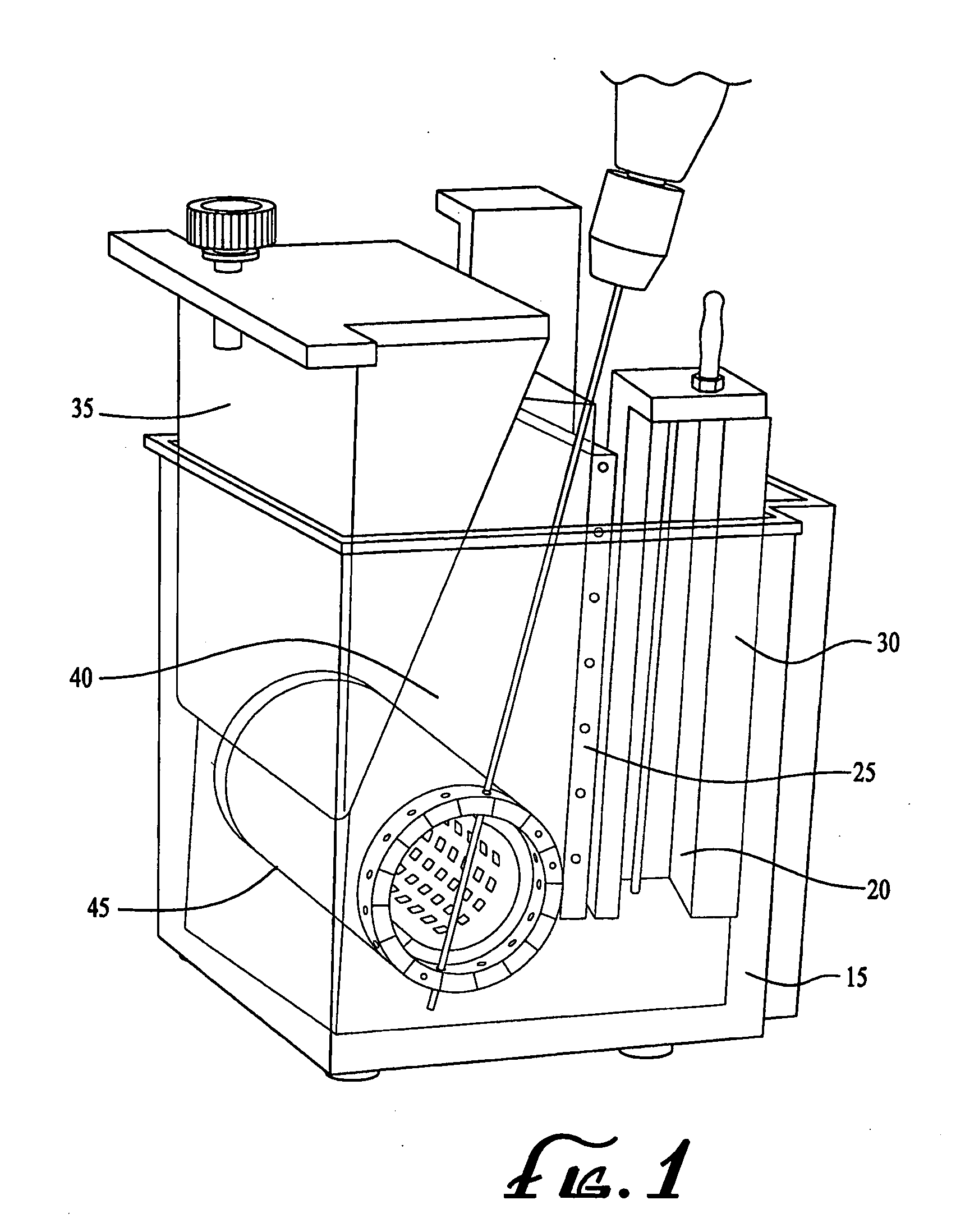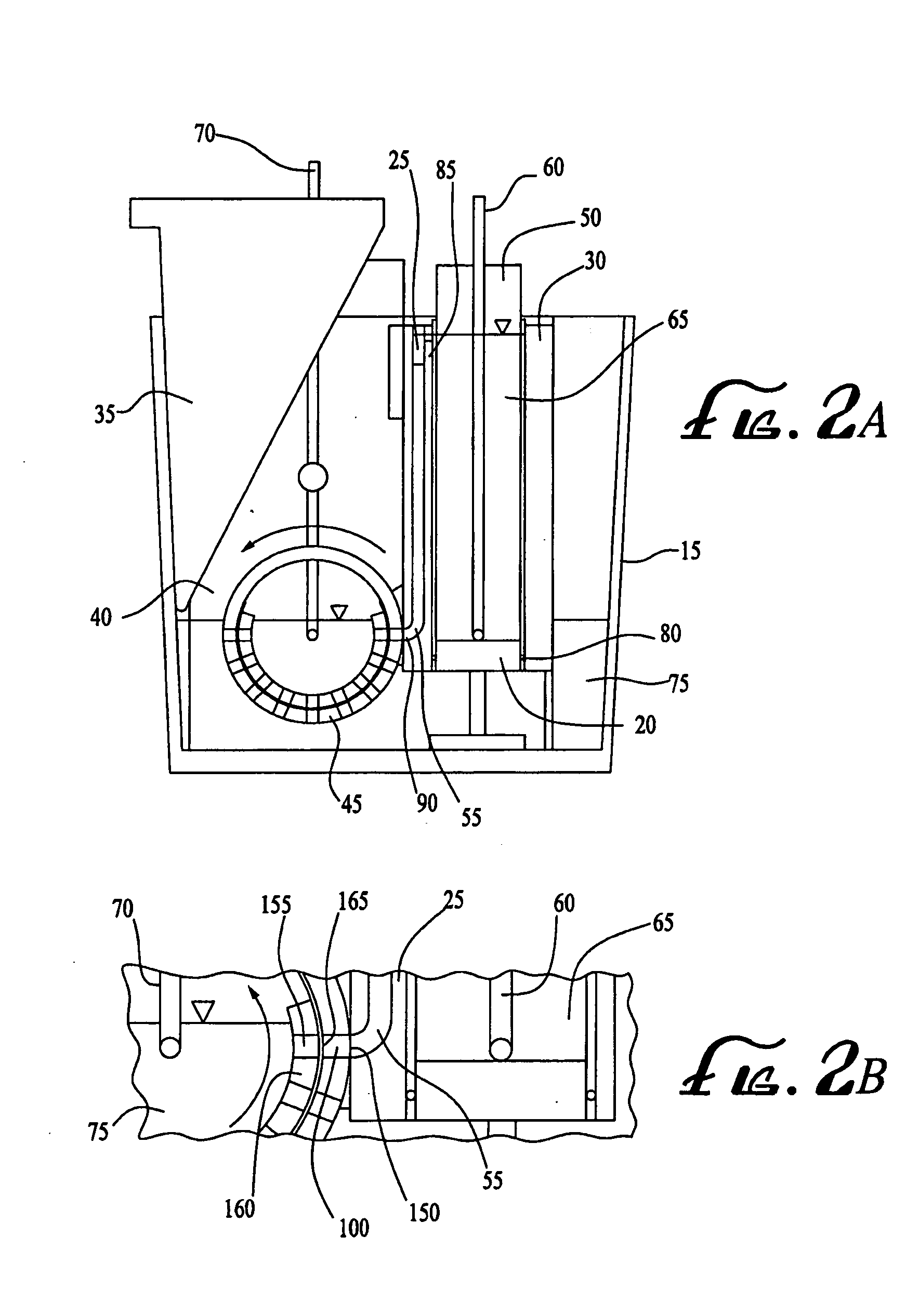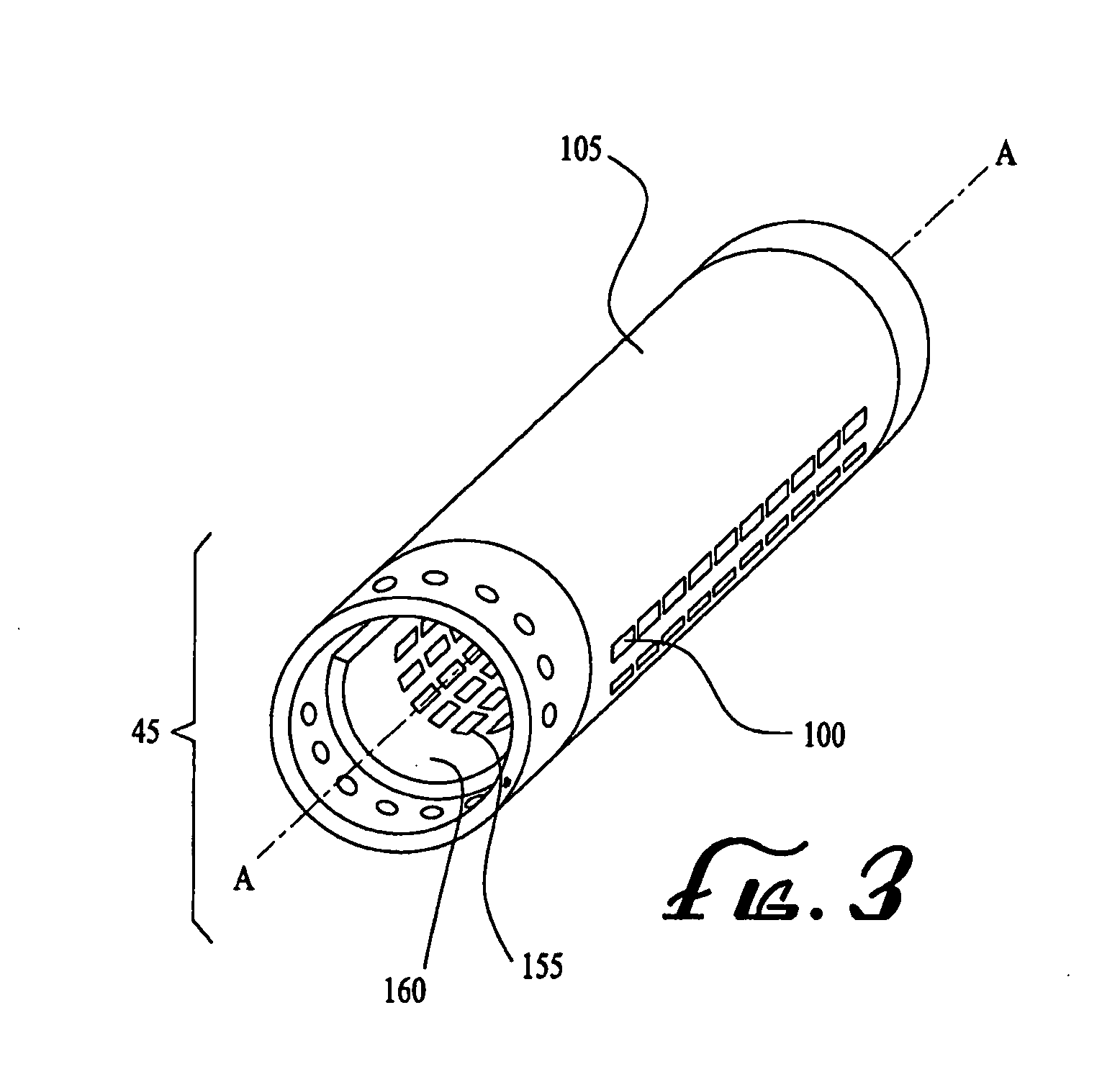Device for sequential protein transfer from a gel
a technology of protein transfer and gel, applied in the direction of fluid pressure measurement, liquid/fluent solid measurement, peptides, etc., can solve the problems of inability to sequentially electroelute separated biomolecules, and the above-mentioned techniques require extensive time and effor
- Summary
- Abstract
- Description
- Claims
- Application Information
AI Technical Summary
Benefits of technology
Problems solved by technology
Method used
Image
Examples
example i
[0032] An example according to the present invention is now described.
[0033] Color standard SDS-protein mixtures (MultiMark Multi Colored Standard, Invitrogen, Carlsbad, Calif.) were separated by sodium dodecyl sulfate (SDS) polyacrylamide gel electrophoresis (PAGE) on a commercial NuPAGE 12% Bis-Tris gel (Invitrogen) in MES-SDS running buffer. As the migrating SDS-protein band enters into the elution channel of the apparatus, it is electrophoresed into the receptacle slots 100 of collection drum 45, containing plugs of 1% Sea Plaque GTG low buffer melting agarose (Bio Whittaker, Walkersville, Md.) prepared in the running buffer.
[0034] An example of a separated mixture is shown in FIG. 4 where four proteins from a MultiMark Colored SDS-protein mixture were first electroeluted into agarose plugs by the present method and then subjected to re-electrophoresis.
[0035] The agarose used is atypical of most standard agarose which requires temperatures of 85-95° C. to melt. Instead, the l...
PUM
| Property | Measurement | Unit |
|---|---|---|
| temperatures | aaaaa | aaaaa |
| temperature | aaaaa | aaaaa |
| rotation | aaaaa | aaaaa |
Abstract
Description
Claims
Application Information
 Login to View More
Login to View More - R&D
- Intellectual Property
- Life Sciences
- Materials
- Tech Scout
- Unparalleled Data Quality
- Higher Quality Content
- 60% Fewer Hallucinations
Browse by: Latest US Patents, China's latest patents, Technical Efficacy Thesaurus, Application Domain, Technology Topic, Popular Technical Reports.
© 2025 PatSnap. All rights reserved.Legal|Privacy policy|Modern Slavery Act Transparency Statement|Sitemap|About US| Contact US: help@patsnap.com



